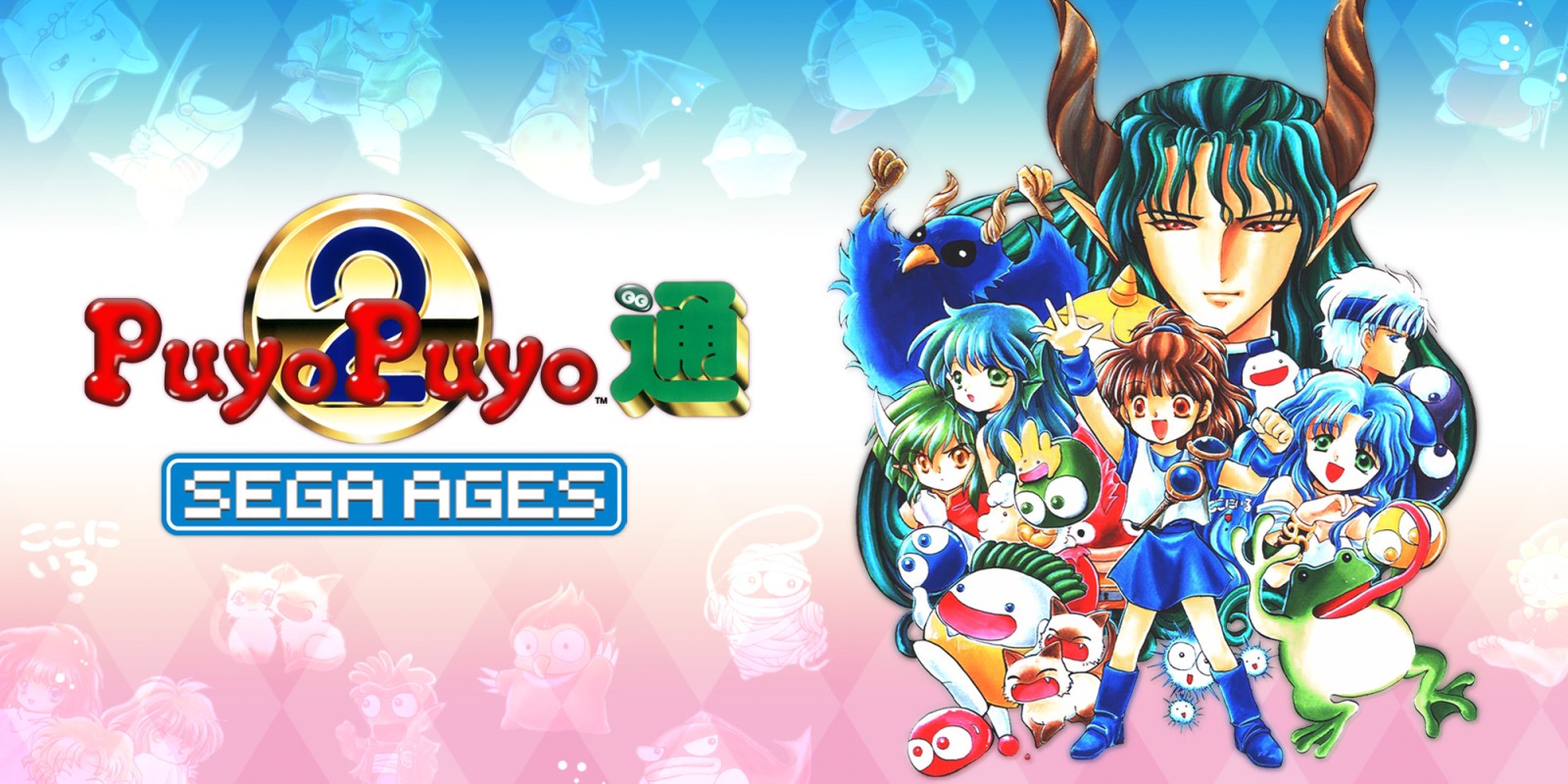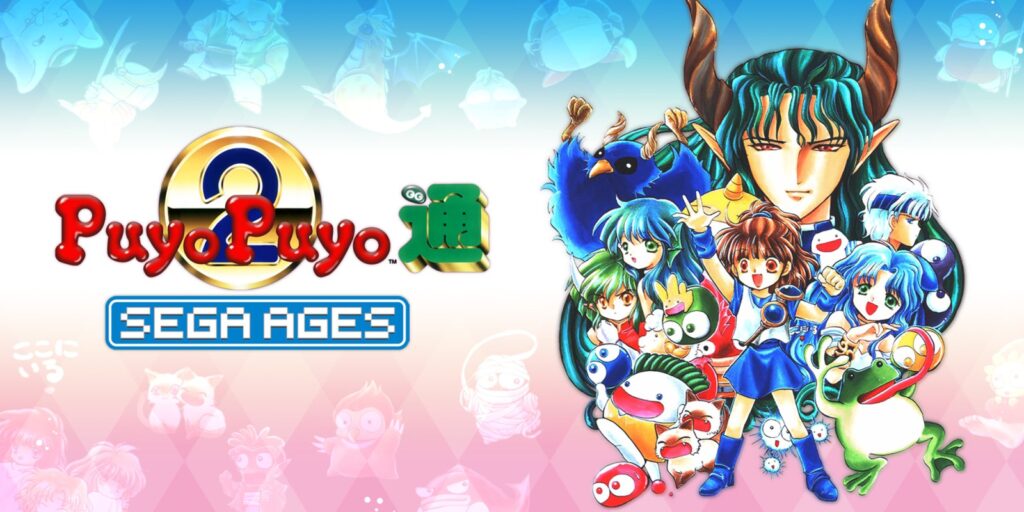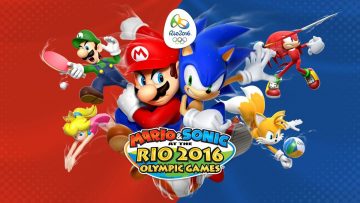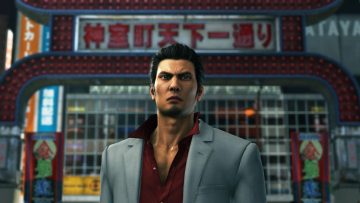
Review: Sega Ages Puyo Puyo 2 (Nintendo Switch)
Puyo Puyo has struggled to gain traction in America. Some would argue it has to do with the fact a number of Puyo games never saw release in the west, but to me that feels more like a symptom rather than a cause. No, from my armchair vantage point, what really holds Puyo back is just how unfriendly this franchise is to newbies.
Originally spun-off from the Japan-exclusive dungeon crawler Madou Monogatari, Puyo Puyo is a versus puzzle game where matching four or more puyo blobs of the same shape will launch an attack on your opponent. Opponents can do the same in retaliation, and linking together chains of matching puyo will amplify an attack’s strength. This simple mechanic forms the basis of all Puyo gameplay.

Over the years, playing Puyo Puyo by yourself has turned into an exercise in frustration. Near as I can tell, the trouble started around the time the original developers (Compile) were folded in to Sonic Team in the early 2000’s. Starting with Puyo Pop Fever, CPU opponents began to demand expert-level play almost immediately. I have distinct memories of hitting a brick wall trying to finish even the second or third match of that game’s quite lengthy story mode. Not much later, English-translated versions of Puyo Puyo (or I guess Puyo Pop) ceased to exist for close to a decade. Whereas Japan received games like Puyo 7, 15th Anniversary and 20th Anniversary celebration games, and even RPG spin-offs like Puyo Quest, it would take until 2017’s Puyo Puyo Tetris before the franchise would resurface again in English.
I have not played much of Puyo Puyo Tetris beyond the demo currently available on the Nintendo Switch eShop, but even there, it’s the same story as Puyo Pop Fever: a raw experience that expects you to instantly be a master of chaining Puyo matches and dealing with incoming attacks. Puyo’s greatest failure is that it has become a franchise for people who are already deeply familiar with Puyo Puyo.
By that measure, that makes Sega Ages Puyo Puyo 2 the greatest Puyo game ever released in North America. That’s for one, simple reason: it has a difficulty slider. Now, it’s not the only Puyo game with a difficulty slider. It’s not even the only Puyo game on the Switch with a difficulty slider, and if you can believe it, it’s not even the only version of Puyo 2 on the Switch. The Super Famicom version of Puyo Puyo 2 has been available for Nintendo Switch Online subscribers since the Super Nintendo app launched last year, and it too comes with a difficulty selector, assuming you can parse the Japanese language menus. But the Super Famicom version only goes as low as “Easy” — Sega Ages Puyo Puyo 2 is based on the arcade version, and has the option to go all the way down to “Very Easy”, ideal for beginners who get destroyed by the game normally (and the menus in Sega Ages are in English, to boot).
Now, I’m not saying all of this because I think Puyo Puyo games are too hard. I think Puyo carries a certain identity that suits the high difficulty well — after all, as the story goes, that very first, original Madou Monogatari game was considered to be surprisingly violent despite the cute anime characters. You’re supposed to get shaken up a little while playing Puyo Puyo. But at a certain point, I became so shook by this franchise that it scared me away, and I’d argue the same is true for others. It’s important to have an approachable way to experience the game that isn’t a cordoned-off training mode. Especially for the longevity of the Puyo Puyo competitive scene. Walk before you run, and all that.
Sega Ages Puyo Puyo 2 offers up other features that either match, or put it in a class above the Super Famicom version available through the Switch Online app. Both Arcade and Endurance Modes are represented, with the ability to rewind gameplay in case you want to erase any potential mistakes. Savestates are available, allowing you to pause gameplay at any point and resume it later, even if it’s in the middle of a match. M2’s typical online leaderboards are in full effect here, complete with a replay system for you to study the top-100 player’s moves. Rounding things out are the usual Sega Ages filters and borders, alongside brand new options to customize the style of your puyo blobs, as well as enable an alternate mode that makes junk puyo harder to clear.
It makes for a nearly perfect package, though not quite. Earlier I mentioned that the version of Puyo Puyo 2 available on the Switch Online Super Nintendo app was entirely in Japanese. That’s still technically true of Sega Ages Puyo 2, as well — though the menu interface is in English, once you boot in to the game proper, you are loading in to the Japanese version of the game. Now, this is a minor nuisance at best, but given the high quality of Sega’s recent localizations, it’s a bummer to see it treated as such an afterthought here.
The little snippets of dialog before a match, the “how to play” tutorials during the game’s attract mode, it’s all still in Japanese, and it shouldn’t be. I get that M2 likely wants to “preserve” Puyo Puyo 2 exactly as it was back in 1993, but at the same time, does Square-Enix “preserve” Final Fantasy IV by only re-releasing it in Japanese? Does Capcom “preserve” Mega Man 2 by only re-releasing it as Rock Man 2: Dr. Wily no Nazo? Even Sega and M2, when Monster World IV re-released, they went through the trouble of localizing it into English for the first time. It’s not the end of the world that Puyo Puyo 2 isn’t localized into English, as the game is still very playable even in Japanese, but it is weird. Especially when you consider that the “how to play” attract tutorials WERE actually localized, but are banished to their own self-contained menu outside of the game.
For that matter, when I saw the “Manual & Tutorials” option on the main menu here, I was hoping the tutorials would include something a little more in-depth and newbie-friendly regarding common chain setups or basic defensive measures. Instead, as mentioned, it’s just the attract mode tutorial from the arcade game, which provides deeply complex information like “when your stack gets too high, you get a game over” and “chain puyos together to attack your opponent.” I joke, because that information is still important — but I was definitely looking for something more.
Speaking as someone who has bounced off of recent Puyo Puyo games more times than I can count, Sega Ages Puyo Puyo 2 is a treat. I haven’t mentioned it until now, but Puyo 2 is the game that the Puyo community largely considers to be one of the gold standards in Puyo Puyo games; this is the basis that all future Puyo games were based upon, and it’s presented in top form here. There are a couple of minor inconveniences here or there, but they’re easy enough to look past. Fans of puzzle games, if you haven’t tried a Puyo yet, you should consider starting here.

![Private: [ID: Zz_LwTdHnno] Youtube Automatic](https://lastminutecontinue.com/wp-content/uploads/private-id-zzlwtdhnno-youtube-au-60x60.jpg)
![Private: [ID: XeVU9aby110] Youtube Automatic](https://lastminutecontinue.com/wp-content/uploads/private-id-xevu9aby110-youtube-a-60x60.jpg)


![Private: [ID: cuo0x7II2rg] Youtube Automatic](https://lastminutecontinue.com/wp-content/uploads/2022/05/private-id-cuo0x7ii2rg-youtube-a-360x203.jpg)
![[ID: htCtXAOVldE] Youtube Automatic](https://lastminutecontinue.com/wp-content/uploads/id-htctxaovlde-youtube-automatic-360x203.jpg)
Guess I’ll give it a look. Though, the differences between the Switch Online one and the Sega AGES one seem a little too small for me to spend the full MSRP. Once it’s half price like Sonic 1 was, I’ll give it a look.